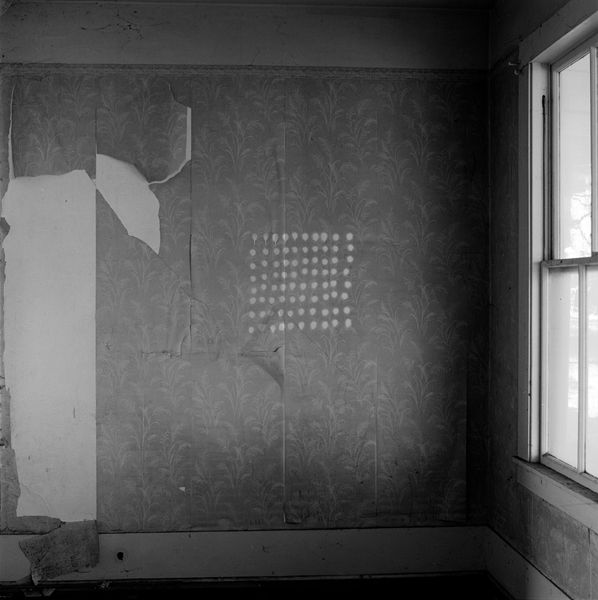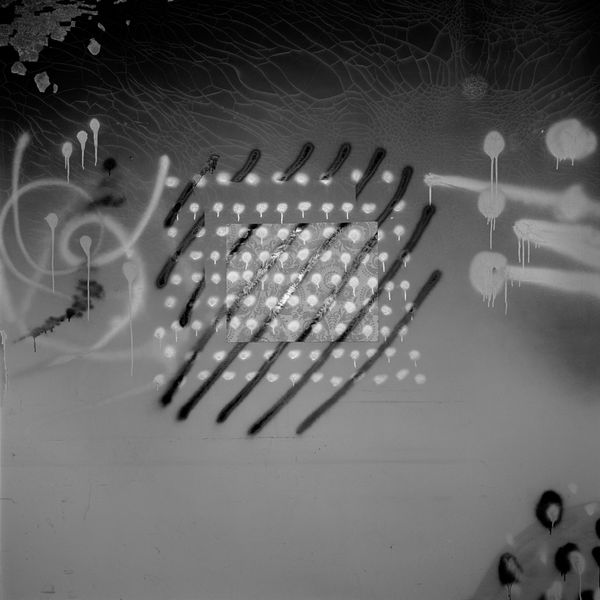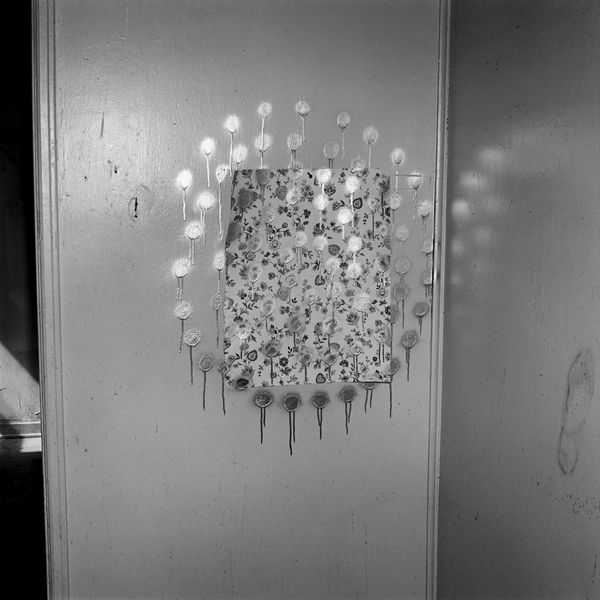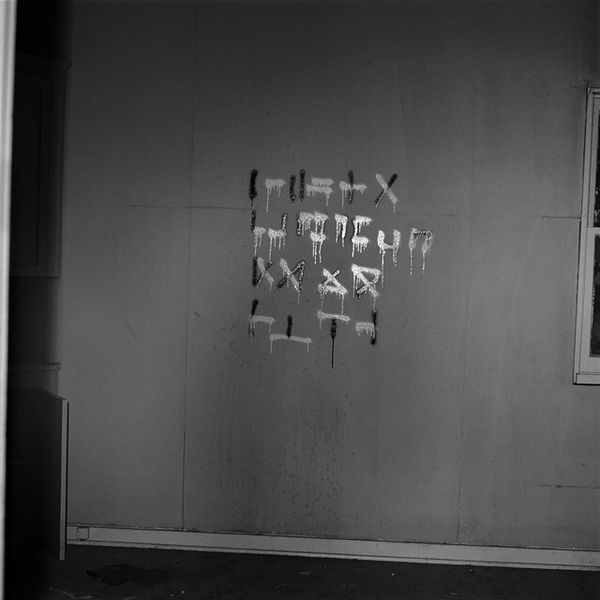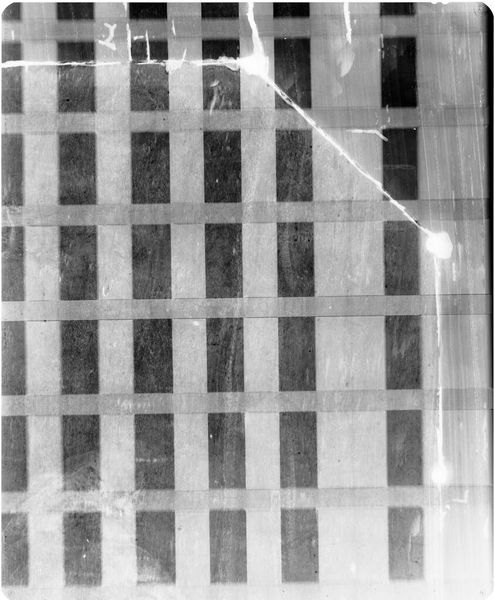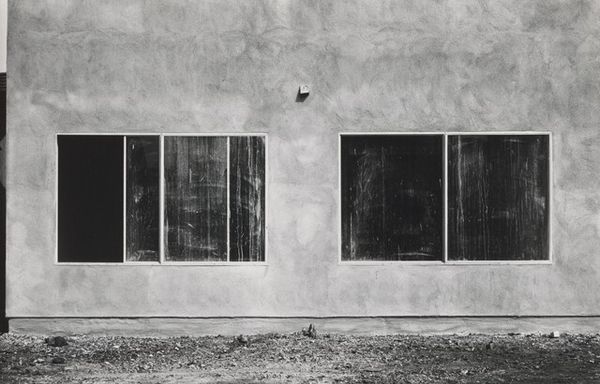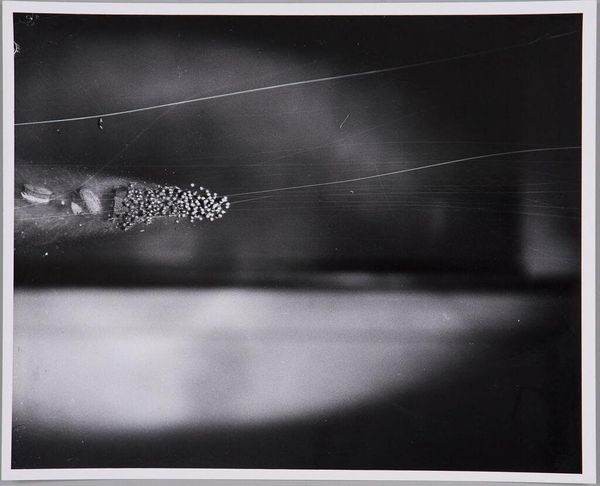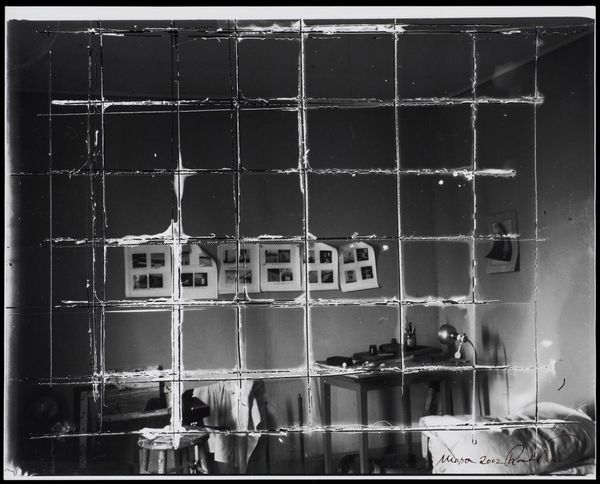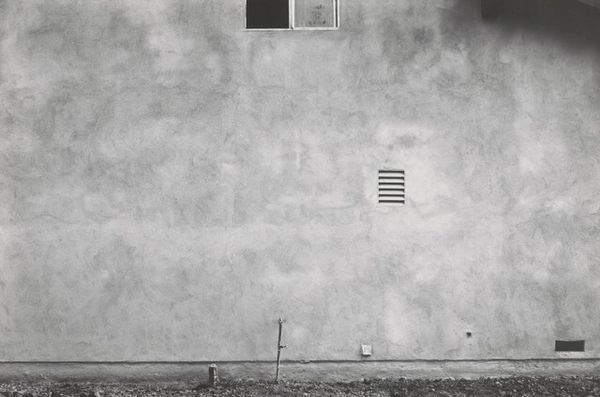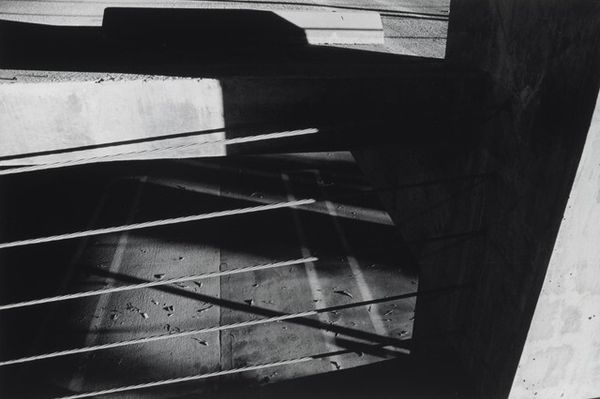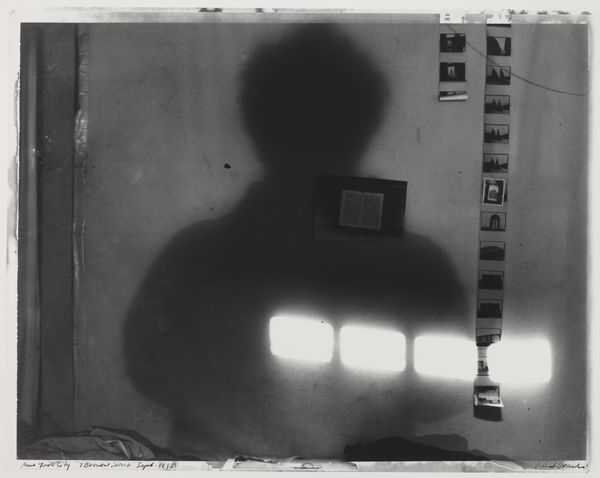
photography
#
conceptual-art
#
minimalism
#
postmodernism
#
sculpture
#
street-photography
#
photography
#
derelict
#
abstraction
Dimensions: image: 34.93 × 34.93 cm (13 3/4 × 13 3/4 in.) mat: 62.23 × 59.69 cm (24 1/2 × 23 1/2 in.) framed: 64.14 × 61.6 × 3.81 cm (25 1/4 × 24 1/4 × 1 1/2 in.)
Copyright: National Gallery of Art: CC0 1.0
Editor: So, we’re looking at John Divola’s photograph, "74V11", possibly taken between 1973 and 1993. It's a black and white image of what looks like a wall with spray-painted dashes forming a spiral around two patterned squares. It’s quite stark, almost unsettling. What do you see in this piece, considering the time it was made? Curator: It strikes me as deeply rooted in the socio-political anxieties of its time. Think about the period, the late 20th century: urban decay was rampant, particularly in places like Southern California, where Divola worked. This derelict space becomes a canvas. How does the intervention – that spray paint and those placed panels – change the space's meaning, its public role? Editor: I see what you mean. It’s not just a photo of decay; it's an active engagement with it. Almost a critique, or maybe a commentary. What do you think he was trying to say by layering these elements? Curator: I think Divola is asking us to question our perception of abandoned spaces and the visual language we use to define them. This relates to the conceptual art movement. Is he vandalizing or creating? Is the image about urban neglect or about reclaiming space through art? How does institutional acceptance or rejection of work like this influence our understanding of these social spaces? The choice of photography, a medium often associated with objective truth, adds another layer to this question. Editor: So the social context really shifts how we see this, turning what could be simple vandalism into a complex statement. Curator: Precisely. It moves the conversation beyond aesthetics and into the realm of public dialogue and social accountability. And that, in my opinion, makes it powerful. Editor: I definitely see it differently now. I was initially focused on the aesthetic, but the historical context adds so much depth. Curator: Absolutely. It reminds us that art is rarely created in a vacuum. Considering the social and institutional frameworks allows us to truly unpack its meaning.
Comments
No comments
Be the first to comment and join the conversation on the ultimate creative platform.

